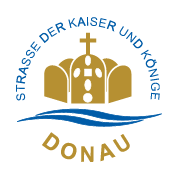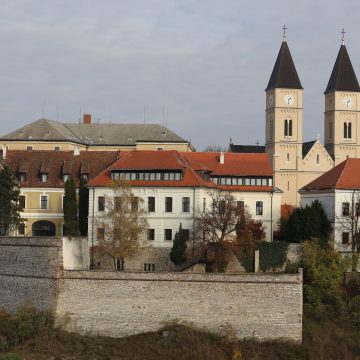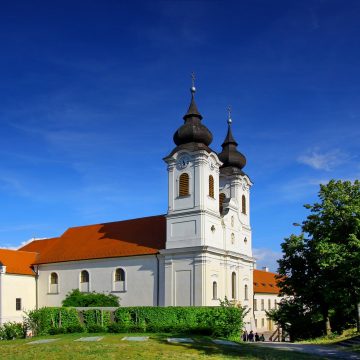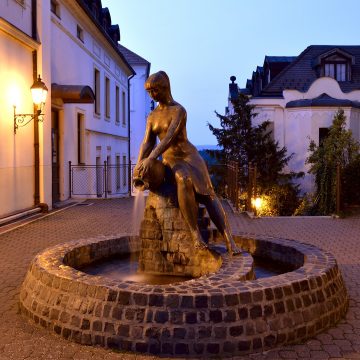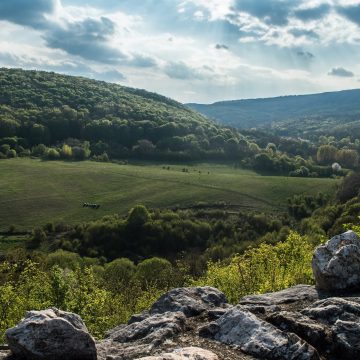Petőfi 200 and Veszprém, the European Capital of Culture 2023
Petőfi 200 and Veszprém, the European Capital of Culture 2023
This article is dedicated to two Hungarian treasures that are of special importance in the year 2023. On the one hand, the most famous poet and freedom fighter of Hungary, Sándor Petőfi, who was born almost 200 years ago on 01.01.1823, on the other hand, the Hungarian city of Veszprém and its region, which, along with two other cities, Elefsina (Greece and Timisoara (Romania) was named the European Capital of Culture 2023.
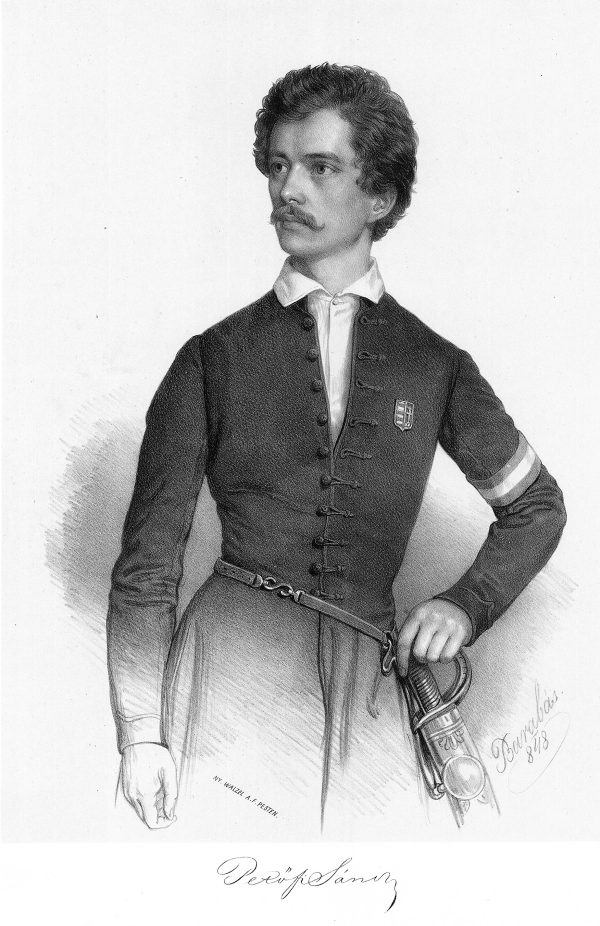
Freedom and love
are all my aspirations!
For my love
I could live,
but for freedom
I could give love itself.
Sándor Petőfi (birth name: Petrovics) was born on 01.01.1823 in Kiskőrös, Hungary. His father was a butcher, his mother worked as a maid before marriage. Although the family moved several times, the parents always tried to send their son to good educational institutions. Unfortunately, this changed after 1838, when the family's financial security collapsed, due to the great flood that year and unfortunate family events - young Petőfi had to leave his school at only 15 years old and struggle with poverty and misery. Therefore, from 1839 to 1841 he became a soldier. But already one year later, he celebrated his first great literary success: his poem "A borozó" ("The Reveler"), appeared on May 22 in the Athenaeum, the most prestigious literary and scientific journal of the time in Hungary. In the same year, the same journal published his poem "Hazámban ("In My Homeland"), which he signed as "Petőfi". Between 1842 and 1844 he tried his luck as an actor in different traveling theaters. These were exhausting years. After he had to give up his dream as an actor, he went to Pest at the beginning of 1844. With the help of his godfather, Mihály Vörösmarty (Hungarian poet and writer, one of the greatest representatives of Hungarian Romanticism), he was able to publish his first collection of poems and was employed as an assistant editor of "Pesti Divatlap" ("Pest Fashion Gazette"). This was perhaps the most productive period of his poetic career. His poems and other works published every week in the magazine were very successful. It is also due to the collection and appreciation of folk poetry that Petőfis folk songs and life stories were so successful. In addition, his love poems in particular greatly increased his popularity with the public. In April 1846, the cycle of sixty-six poems entitled "Felhők" ("Clouds") was published in a single volume. "Felhők" is not only an innovation in his poetry, but also a turning point his point of view. He realizes that he must direct his gaze to a higher goal: namely, to serve the peoples who want to free themselves from their slavery. In 1846 he met Júlia Szendrey, whom he married a year later, on September 8, 1847. On January 1, 1847, he published his famous poem "Szabdság, szerelem!" ("Freedom and Love"): These two concepts strongly influenced not only his poetry, but also his life.
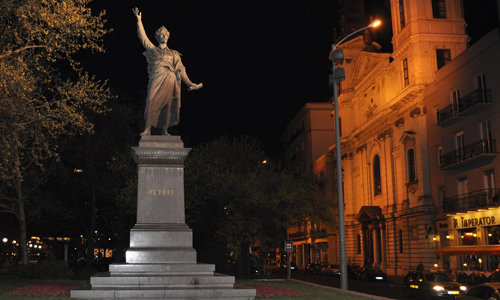
March 15, 1848 is the day of the Hungarian Revolution in Pest and Petőfis' day. As the spiritual leader of the "March Youth" he was one of the main actors of the events. Besides the 12 Points, his work "Nemzeti Dal"(" National Song") is the most important expression of the people's will. The poet's vision of the revolution seemed to be realized, and he stood at the head of a popular movement in the role he had envisioned. But from March 15, 1848, the height of victory and glory, to July 31, 1849, the final catastrophe of Segesvár, his path seems to have been one great fall. He could not keep his position in politics after March 15 and he lost his leading role. On October 15, 1848, Petőfi became a captain with the Honvédbataillon in Debrecen. From 1849 he served as an aide-de-camp under the Polish general Józef Bem in the Hungarian struggle for freedom against the Habsburgs. In the battle of Segesvár Petőfi was finally killed on July 31, 1849.
Those who want to learn more about Petőfi should go to the Petőfi Literature Museum (Petőfi Irodalmi Múzeum) in Budapest, where this year there is also a new permanent exhibition "Költő lenni vagy nem lenni" (To be a poet, or not to be) about the poet.
For the Petőfi Year 2023, different programs will take place throughout the year at numerous locations with an intersection: The Hungarian poet is at the center. If you want to see the whole list of different programs and locations, visit the Petőfi website designed for the occasion.
Finally, an interesting fact about Petőfi: according to literary historians, the poet visited the city of Veszprém several times - the last time with his wife on March 5-6, 1848. Under his poem "A vadonban" ("In the Wilderness") he himself recorded the place and year: Veszprém, 1842. Allegedly, he was also to have performed as a member of the traveling stage in Veszprém and in the area! In his honor, the theater of the city bears his name: "Petőfi Theater Veszprém".
The title "European Capital of Culture" promises a diverse program that is the result of the cultural activities in the region. The aim of the Capitals of Culture is to share and showcase culture with the rest of Europe, while also increasing the creative economy and attractiveness for visitors. Europe looks curiously at Hungary and the Veszprém/Balaton region impresses with many great events and projects around its culture, people and history.
What makes the Capital of Culture Veszprém and its surroundings so special?
The city of Veszprém has a long history. Already in the 5th millennium before Christ people lived in the area - this is also proved by archaeological findings. In the 2nd-4th century the Romans lived in the area, called Pannonia. In the years 895-896, in the early Middle Ages the Hungarian tribes (Magyars) discovered the Carpathian Basin and the family of the Grand Duke took possession of the city of Veszprém and its surroundings. At the end of the 10th century Veszprém became the princely and royal seat. In 1216 the right of the respective bishop of Veszprém to crown the queen was confirmed by a papal law. Thus Veszprém became the city of queens. Through the coming centuries, the city was raided, bombed and destroyed several times. Nevertheless, today there are still numerous monuments in the city that survived these difficult times, such as the Veszprém Castle, the Heroes' Gate, the Fire Tower, the St. Michael Cathedral, the Gisela Chapel or the ruins of the Greek Monastery.
The surroundings of Veszprém are also worth seeing! LakeBalaton is only 30 minutes away by car. The Benedictine Abbey in Tihany is one of the most famous destinations on the northern shore of Lake Balaton. If you want to spend time in nature, you can visit Csesznek Castle or Sümeg Castle. F or nature and tree lovers, the Cistercian Abbey with its arboretum in Zirc is an obligatory program, as it is the highest collection of trees in Hungary. If you are looking for special souvenirs from the region, you should stop in Herend, only 10 minutes away, where the oldest and largest porcelain manufactory in Hungary and Europe is located. In the visitor center "Porcelanium" you can find tableware and other useful and beautiful things.
Veszprém was awarded the prestigious 7th place in the "European Best Destinations 2023" competition and is one of the most family-friendly urban destinations. The city of queens awaits you!
For more information about the sights, guided tours and accommodation, please contact Vesprem Tourism. #helloveszprem
Capital of Culture Vesprem
https://www.facebook.com/VeszpremBalaton2023
https://www.instagram.com/veszpreminfo/
Edit Fazekas is a former German language and literature student of the Faculty of Humanities at Loránd Eötvös University in Budapest. She currently lives in Germany, thus connecting the Hungarian and German-speaking regions. Travel and (whether German or Hungarian) literature are two of her - not so secret - passions.
